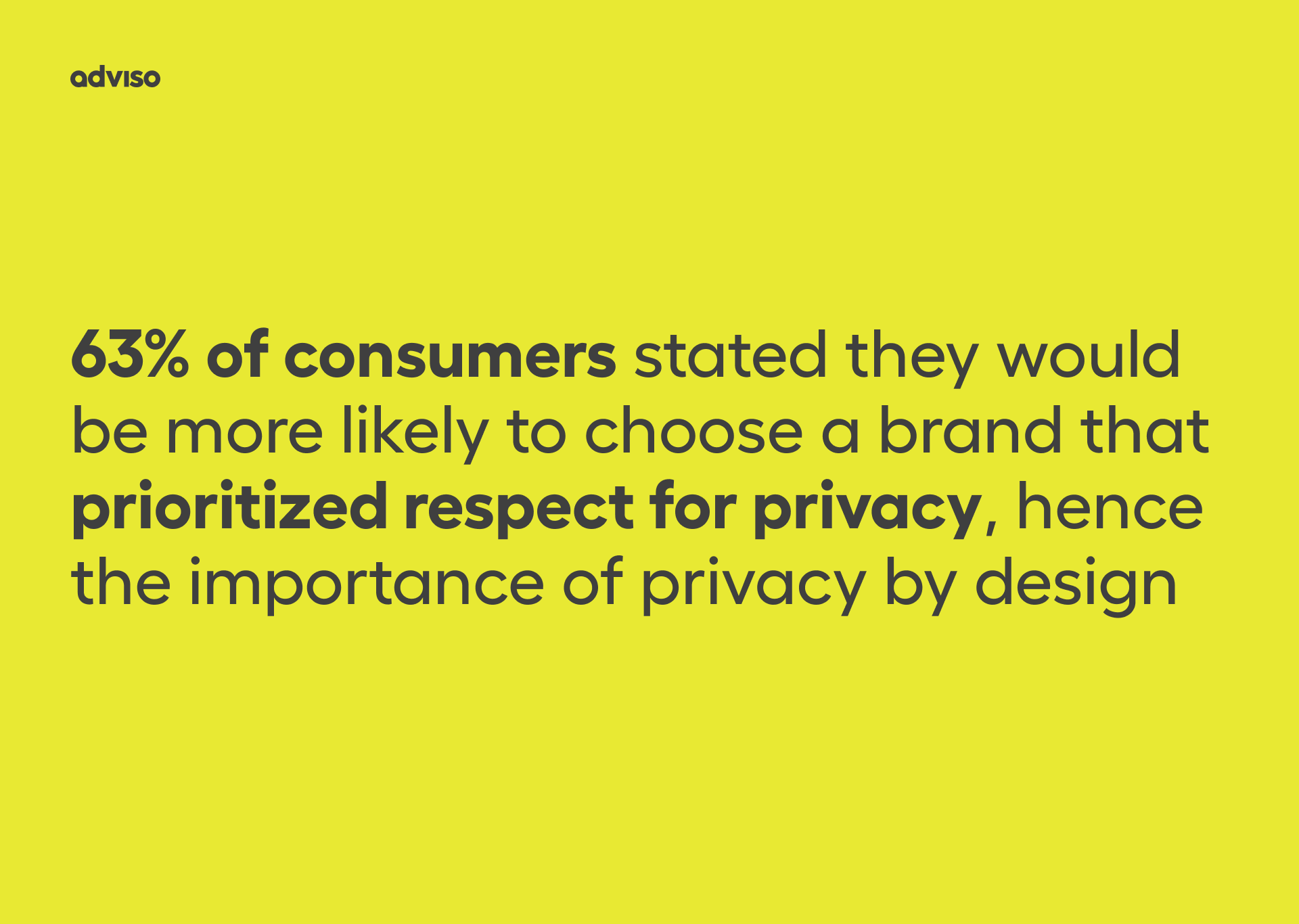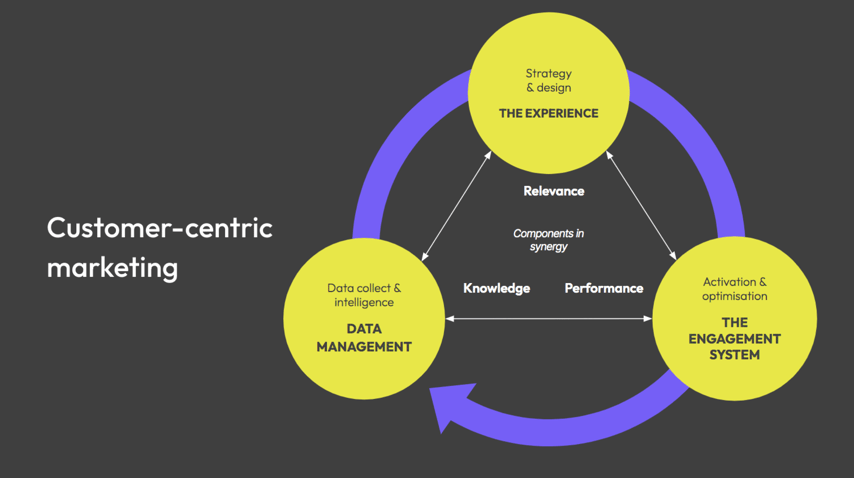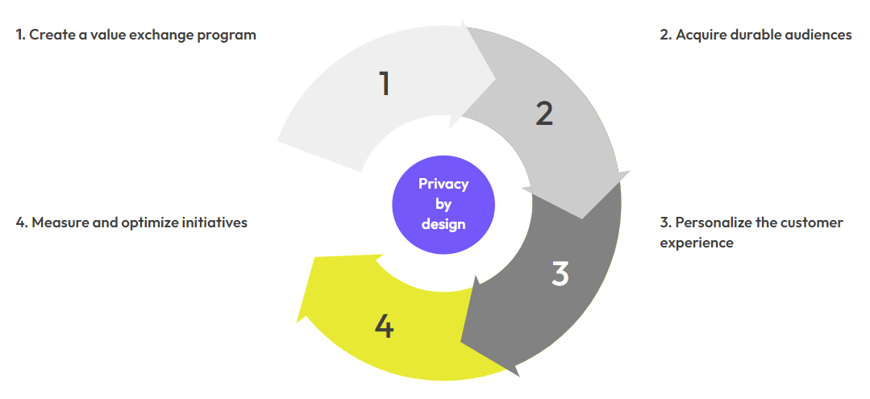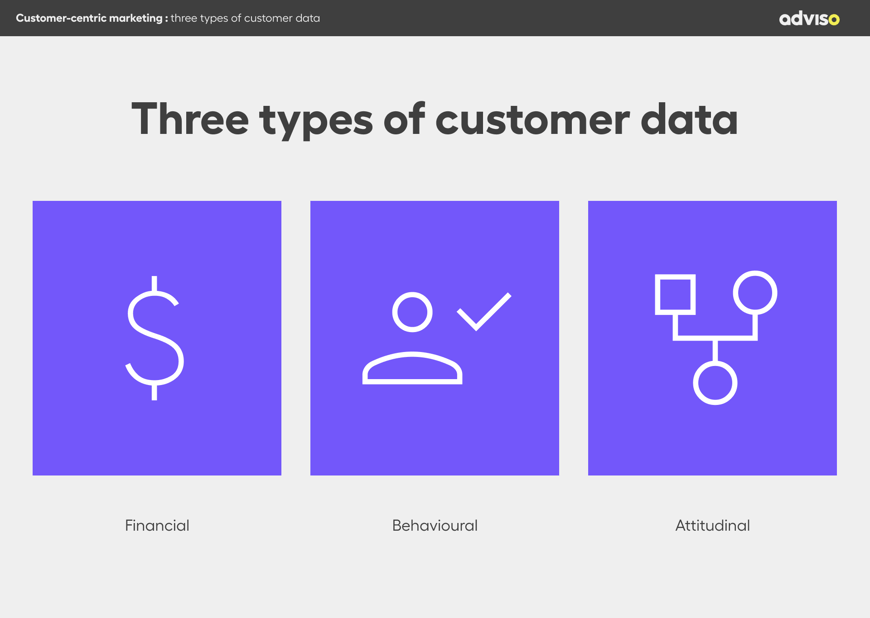Vice-President Data & Customer Experience, Partner
Customer-centric marketing’s big comeback
Vice-President Data & Customer Experience, Partner
Customer-centric marketing never really exited the spotlight. Consumers’ desire to protect their privacy, the various laws to enforce respect for that privacy and technological changes to reduce online profiling (the end of third-party cookies) have amplified the importance of this marketing philosophy. For three years, the concept has gained in importance as a solution for maintaining and increasing companies’ business performance within a shifting digital context.

What is the connection between customer-centric marketing and marketing focused on the respect for privacy?
Privacy-centric marketing is based on three main principles: obtaining explicit consent from consumers for the use of their data, the need to offer value to consumers in exchange for their data, and the protection of personal data. The first two principles cannot be achieved without a deep understanding of customers, as well as a marketing program that offers added value with every interaction between the customer and the brand. Understanding customers and building a strong relationship with them to increase their satisfaction are also fundamental to customer-centric marketing.
-1.png?width=870&height=619&name=Marketing%20centr%C3%A9%20sur%20le%20client%20_%20les%20trois%20grands%20principes1%20(6)-1.png)
What are the main elements of customer-centric marketing?
The three key elements of customer-centric marketing are:
-
Customer intelligence and data: To understand your customer, you must rely on quantitative and/or qualitative data.
-
Customer experience: Customer intelligence creates added value with every interaction with the brand, which can be seen in the customer journey. Customer experience is a sensitive pillar in customer-centric marketing.
-
Engagement systems: To interact with the consumer, you need to use technological platforms, such as email and media platforms and customer data platforms (CDP). These platforms are systems for maintaining engagement.
The chart below illustrates how these elements work together:

Which activities are the most critical to building a customer-centric marketing program that respects privacy?
To create a customer-centric program that respects privacy, it’s important to ensure you engage in the activities presented in the chart below. It should be noted that your customer-centric marketing program must implicitly take into consideration the ideas of consent in data collection and the use of that data, as well as the respect for privacy.
The chart below presents some of these activities.

Understanding your customer
At the risk of repeating myself, to build a customer-centric program, you have to start with understanding your customer. Creating a database and generating customer intelligence are essential to the success of the program. At least three types of customer data are needed: financial data (the value of your customers), behavioural data (their purchase and use of products or services) and attitudinal data (their perception of the brand and the competition).

Building your value exchange program
Once you’ve analyzed your customers’ needs, you need to build a value exchange program so you can offer real value in exchange for data. There are a variety of value exchange structures; these may take the form of points programs, promotional offers or discounts, or access to personalized or premium content. The higher the perceived value by the customer, the greater the chance they will consensually share their data with you.
Building resilient audiences
You can’t deliver an omnichannel experience without resilient audiences. These are characterized by persistent identifiers, such as email addresses or phone numbers. This persistent identifier, as opposed to cookies (non-persistent identifiers), lets you offer a relevant experience online, offline, on the web, on mobile, or through connected TV. Users cannot be called an “audience” with just an email address: You have to enrich this data with behavioural and attitudinal data. The data used for enrichment purposes are primary (first-party) data or zero-party data. They are collected and managed through platforms such as customer data platforms (CDP) or CRM or digital analytics platforms (Google Analytics, Amplitude, Adobe Analytics). Developing a data strategy is critical for acquiring primary data with consent. Brands need to use a deft hand when capturing data—there’s a delicate balance between not collecting enough and collecting too much (i.e., the relevance of the data collected).
Delivering a relevant experience
The value promised is fulfilled through the customer experience. Delivering promotional offers or personalized content based on an understanding of the customer and their data is essential for ensuring their satisfaction. The consumer must obtain real value for the exchange to be relevant. Customer experience is considered a competitive advantage for many consumers. It must reinforce transparency with regard to the use of data, but also offer customers the possibility of modifying or removing their consent if they no longer want to be contacted or targeted. Successful customer experience needs to balance privacy and personalization.
Ensuring continuous security and confidentiality for customer data
Privacy by design is an extremely important concept when it comes to designing customer experiences. The concepts of privacy and data security must be present throughout the process, from data collection through to activation. Transparency with regard to data use should be omnipresent. Brands need to offer consumers total control of their data through, for example, consent management, the right to be forgotten, etc.
In an ATB Ventures survey, 63% of consumers stated they would be more likely to choose a brand that prioritized respect for privacy, hence the importance of privacy by design.
I hope this article has provided some clarification of the pillars of customer-centric marketing and the respect for privacy. This idea remains the most robust solution for dealing with recent changes in the digital and legal ecosystems brought about by the desire to protect consumer data. If you’re planning to develop a program based on this concept, don’t hesitate to get in touch with us.










